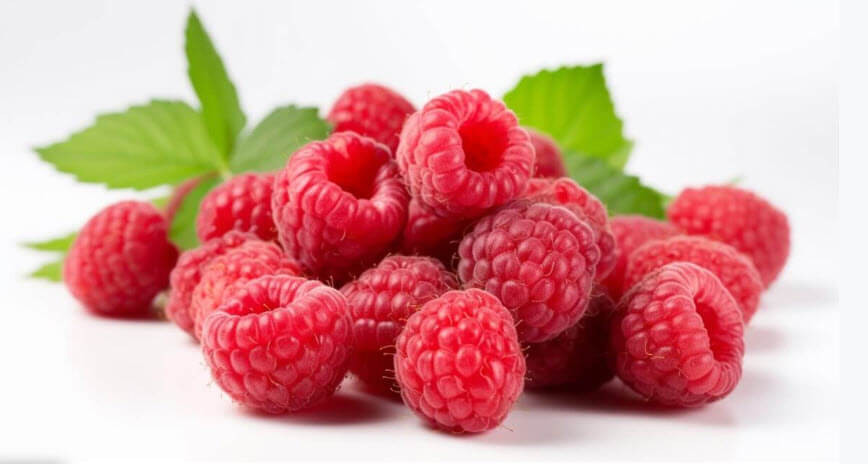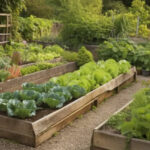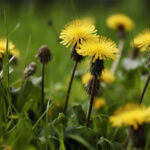Would you prefer to listen to a short podcast discussion about this article? Click on the audio below.
Raspberries are a delightful fruit to grow in the UK, providing gardeners with juicy, sweet berries for many months of the year. Growing this fruit is a rewarding experience, but it requires some know-how to get the best results. In this article, we’ll explore how to grow raspberries in the UK.
From preparing the soil to harvesting the fruit, we’ll cover everything you need to know to grow healthy, productive raspberry plants. Whether you’re a seasoned gardener or new to fruit growing, this guide will provide you with the essential information you need to grow raspberries successfully.
1. Preparing the Soil
Growing raspberries require a lot of nutrients and the correct soil pH. Here are the three steps to prepare your soil for planting raspberries.
Testing Soil pH
Before planting, it’s essential to test the soil’s pH. Raspberries thrive in soil with a pH between 6 and 7. If your soil pH is below 6, you can add lime to raise the pH. On the other hand, if your soil pH is higher than 7, add garden sulfur to bring down the pH level.
Improving Soil Drainage
Raspberries require well-drained soil. If your soil doesn’t drain properly, the roots may rot, killing the plants. To improve soil drainage, add organic matter like compost or well-rotted manure.
Addition of Organic Matter to Soil
Organic matter is essential for healthy raspberry plants as it increases the soil’s nutrient content. Add compost or manure to your soil. Spread it over the soil in the fall and work it into the top few inches of the soil.
2. Planting
Planting raspberries is one of the most critical steps to grow a healthy crop. Follow these three steps to plant raspberries correctly.
Choosing the Right Plant Variety
There are two types of raspberries, summer-fruiting and autumn-fruiting. Summer-fruiting raspberries produce fruit in June and July while autumn-fruiting raspberries produce fruit from August to October. Decide which variety you want before planting.
Planting at the Right Time and in the Right Location
The best time to plant raspberries is in late autumn or early spring. Choose a sunny location with good air circulation and well-drained soil. Avoid planting in a spot where tomatoes, potatoes, or peppers have grown in the past.
Planting Techniques
Dig a hole wide enough to fit the roots of the raspberry plant and deep enough to cover the roots. Place the plant in the hole and fill the hole with soil. Water the plants thoroughly.
3. Watering and Fertilizing
Here are some tips for watering and fertilizing your raspberry plants once they are in the ground.
Watering Techniques
Water your plants once a week, especially during dry spells. Raspberries prefer consistent moisture, so make sure they get at least an inch of water every week during their growing season.
Types of Fertilizers
Raspberry plants require a lot of nutrients to grow big and juicy raspberries. Apply a balanced fertilizer with equal amounts of nitrogen, phosphorus, and potassium in early spring, and again in late spring.
Application of Fertilizers
Spread the fertilizer evenly around the base of the plants, and then water to help the nutrients soak into the soil.
4. Pruning Raspberry Plants
Pruning is essential for raspberries to produce a healthy crop and keep the plant healthy.
Why Pruning is Necessary
Pruning helps remove any dead or diseased canes, making room for new ones to grow. It also helps keep the plant’s size in check, ensuring you get a healthy crop year after year.
When to Prune
Prune your raspberries in late winter or early spring before new growth begins. Cut out the canes that bore fruit the previous year, leaving the healthiest canes for the new year.
Methods of Pruning
There are two methods of pruning raspberries, winter pruning and summer pruning. Winter pruning involves cutting out the canes that bore fruit the previous year. Summer pruning is done in late June or early July when you remove the tips of the new green canes to encourage lateral branching.
5. Controlling Pests and Diseases
Common Pests and Diseases
Raspberries are vulnerable to a range of pests and diseases, including aphids, spider mites, raspberry beetles, and viruses. Common diseases that can affect raspberries are anthracnose, Botrytis blight, and powdery mildew.
Preventing Pests and Diseases
One of the best ways to prevent pests and diseases is to start with healthy plants. Avoid planting raspberries in areas where they’ve previously grown, as this can lead to soil-borne diseases. Keep raspberries well-watered and weed-free, as weeds can harbour pests and diseases. Remove and dispose of any infected or diseased plants, and avoid using chemical pesticides.
Treatment Options for Pests and Diseases
If you notice signs of pests or diseases, take action immediately to prevent the spread. You can try using natural methods such as introducing ladybugs or lacewings to the garden to eat aphids or spraying the plants with insecticidal soap. For diseases, try removing affected leaves or fruit, and avoid overhead watering. In severe cases, you may need to resort to using chemical fungicides or pesticides, but use these as a last resort and follow the instructions carefully.
6. Harvesting Raspberry Fruits
When to Harvest
your crop is ready to harvest when they are fully ripe and easily detach from the plant. This usually occurs in mid to late summer, depending on the variety. Check your plants regularly and harvest fruit as soon as it’s ready to avoid overripe or spoiled fruit.
Proper Techniques for Picking Raspberry Fruits
To pick raspberries, gently grasp the fruit and twist it off the plant. Be careful not to squeeze or crush the fruit, as this can damage it. If you’re harvesting a large quantity of raspberries, use a shallow container to avoid crushing the fruit at the bottom.
Storage of Raspberries
Raspberries are delicate and perishable, so it’s best to consume them as soon as possible after harvesting. If you need to store them, place the berries in a shallow container and refrigerate. Raspberries can also be frozen for later use; simply spread the berries out on a baking sheet and freeze them before transferring them to a freezer-safe container.

7. Winter Care for Raspberry Plants
Preparing Raspberries for Winter
In the UK, raspberries are typically pruned in late winter or early spring, before new growth emerges. Before winter sets in, remove any diseased or dead canes, and trim back the remaining canes to about 6 inches in height.
Protection Techniques in Winter
To protect raspberry plants from winter weather, cover the base of the plants with a layer of mulch, such as straw or wood chips. This will help to insulate the plants and protect the roots. You can also cover the plants with garden fabric or a frost blanket on particularly cold nights.
Care for Raspberry Plants in Spring
In early spring, remove the protective coverings and inspect the plants for signs of new growth. Once new growth emerges, fertilize the plants with a balanced fertilizer and water well. Remove any weak or damaged canes that didn’t survive the winter, and prune the remaining canes as needed. With proper care, your raspberry plants should produce a bountiful crop of juicy, delicious fruit.
With the right care and attention, growing raspberries can be a fun and fulfilling experience. By following the tips and advice outlined in this guide, you should be able to grow healthy, productive raspberry plants that will provide you with an abundant harvest for many years to come. So why not give it a try and see what delicious treats you can create with your own homegrown raspberry fruits?
FAQ:
1. When is the best time to plant raspberries?
The best time to plant raspberries is in late autumn or early spring when the soil is moist but not waterlogged. This will give the plants time to establish themselves before the summer growing season.
2. How often should I water my raspberry plants?
Raspberry plants need regular watering, particularly during the growing season. Water them deeply once a week, making sure the soil stays moist but not waterlogged. In hot weather, you may need to water them more frequently.
3. How do I prevent pests and diseases from damaging my raspberry plants?
The best way to prevent pests and diseases in raspberries is to ensure that the plants are healthy and well-cared for. Regular pruning, fertilizing, and watering will help to keep the plants strong and resistant to pests and diseases. You can also use natural remedies such as neem oil or insecticidal soap to control pests.
4. What variety of raspberry is best for growing in the UK?
There are many different varieties of raspberries that can be grown in the UK, but some of the most popular include Autumn Bliss, Glen Ample, and Polka. These varieties are known for their sweet, juicy berries and are well-suited to the UK climate.
If you are keen on organic gardening, check out The Soil Association website
If you need any further information or assistance with this article, don’t hesitate to Contact Us




















